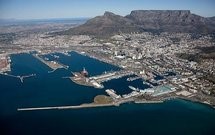 At the 6th summit at Fortaleza in Brazil, the BRICS (Brazil, Russia, India, China and South Africa) countries announced a seed capital of US$50 billion and US$100 billion Contingent Reserve Arrangement (CRA) for the New Development Bank which would support infrastructure and development projects of the developing world. This has attracted international attention and has been labelled as an attempt by the ‘emerging economies’ to challenge the well-established global financial institutions such as the World Bank and International Monetary Fund (IMF) which are ‘controlled’ by the developed world.
At the 6th summit at Fortaleza in Brazil, the BRICS (Brazil, Russia, India, China and South Africa) countries announced a seed capital of US$50 billion and US$100 billion Contingent Reserve Arrangement (CRA) for the New Development Bank which would support infrastructure and development projects of the developing world. This has attracted international attention and has been labelled as an attempt by the ‘emerging economies’ to challenge the well-established global financial institutions such as the World Bank and International Monetary Fund (IMF) which are ‘controlled’ by the developed world.
These emerging economies are coastal states and the constants of geography endow them with enormous economic muscle. The Exclusive Economic Zones provide them with enormous quantities of living and non-living resources and the long coastlines are dotted with major ports. They have invested enormous capital to build maritime infrastructure and some of them are keen to support global projects such as the Maritime Silk Route mooted by China and the development of the Northern Sea Route (NSR) through the Arctic by Russia. In essence, the BRICS countries are highly dependent on the seas and are connected with each other through the Atlantic, Pacific, Indian and the Arctic Oceans over which more than 90 per cent of global trade by volume is transported.
Maritime security has been high on the agenda of the BRICS nations and the respective leaders have supported cooperative security structures based on the belief that the benefits of cooperation must be enjoyed by the whole maritime community. Significantly, four of the five BRICS countries have been actively engaged in counter-piracy operations in the Gulf of Aden. They have worked closely to support UN resolutions and cooperated with other nations at bilateral and multilateral levels to fight piracy.
However, they have not explored the possibility of operating under the BRICS banner. This does not preclude them from conceptualising programmes and exercises to respond to myriad maritime asymmetric threats and challenges faced by the international community. It will be useful to mention that India, Brazil and South Africa (IBSA) are already engaged in trilateral maritime cooperation and have held exercises to address issues relating to maritime security. Such an arrangement can also be explored for the BRICS nations.
Geographically, the BRICS countries are located in different continents, yet have common interests in the Polar Regions i.e. the Arctic and the Antarctic. Till very recently, these nations had focused on scientific studies and established research stations in the Polar Regions. They have now expanded their interests to include resources and trade through the NSR. Among these, Russia is an Arctic country and climate-induced changes in the region directly affect it. Its other interests include routes through the Arctic which are navigable during summer months and offshore living and non-living resources particularly oil and gas which can now be exploited.
China and India too have interests in the Arctic and have recently been inducted into the Arctic Council. Both countries have set up research stations to study climate, weather, geology and atmospheric sciences and are looking for opportunities to exploit the resources in the region. Brazil and South Africa have interests in Antarctica and send scientific expeditions to the region. Given the transnational and transoceanic nature of the impact of changes in the Polar Regions, BRICS countries are important stakeholders in any discourse, development and policy formulation for the Arctic and Antarctica. The BRICS countries are parties to the Antarctic Treaty Consultative Meeting (ATCM) and could develop common research programmes for the Polar Regions, undertake joint scientific expeditions, and share data.
One of the significant maritime projects currently under development by the BRICS countries involves the fiber optic cable from the Pacific to the Atlantic through the Indian Ocean. This 34,000 km long and 12.8 terabit capacity network, the third longest underwater cable in the world, connects Vladivostok in Russia, Shantou in China, Chennai in India, Cape Town in South Africa and Fortaleza in Brazil.
This will help the BRICS to develop an exclusive and secure intranet and transact critical financial and security data. Apparently, the cable is meant to circumvent attempts to eavesdrop on the digital data sent through networks owned by IT companies which are alleged to have supplied information/records to the National Security Agency (NSA) of the US. It is important to mention that underwater cables are not free from the dangers of data interception and theft and the US possesses capabilities to undertake such covert operations.
In essence, the maritime domain offers the BRICS countries opportunities to develop common understanding on a host of issues that range from sustainable resource development, trade, safety and security of sea lanes, and ocean governance. These issues can potentially foster mutual trust and cooperation among the BRICS partners and contribute to global security.
By Special Arrangement with : Institute of Peace and Conflict Studies (http://www.ipcs.org)